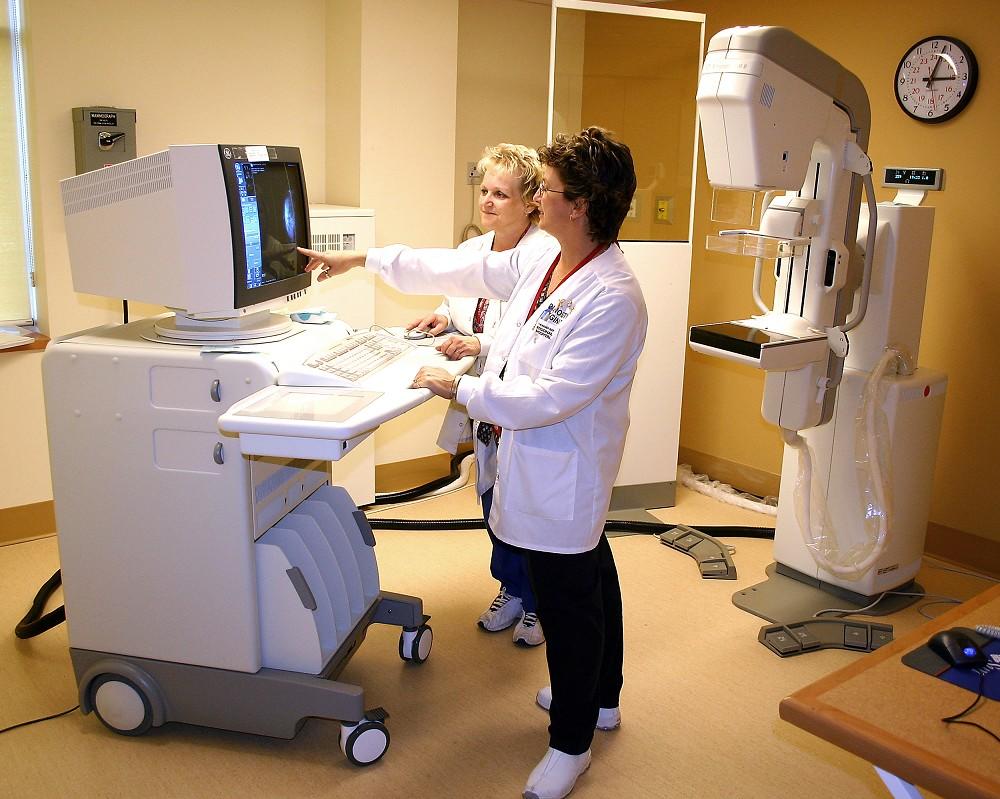Breast Cancer Screening: An Informed Decision
by Sara Chow
 Provincial guidelines recommend that women be screened for breast cancer by having a mammogram every 2 years, from ages 50 to 74. Talk to your healthcare provider about what’s right for you.
Provincial guidelines recommend that women be screened for breast cancer by having a mammogram every 2 years, from ages 50 to 74. Talk to your healthcare provider about what’s right for you.In Ontario, it is estimated that 1 in 9 women will be diagnosed with breast cancer in their lifetime. Breast cancer is also the most commonly diagnosed cancer in Canadian women. Your breast health is important, and that’s why it’s important that you make informed decisions on breast cancer screening. This article will help to inform you about mammography and complementary screening options.
Currently, a mammogram is the gold standard for breast cancer screening and is the breast screening tool that Ontario recommends. The effectiveness of mammography has been well established by several large clinical trials. Meta-analyses of these trials have found a relative risk reduction of breast cancer deaths of between 15-25% for women aged 50-69 years. Mammography is the recommended screening test for breast cancer by Cancer Care Ontario, the provincial advisor on cancer care, and the Canadian Association of Radiologists Mammography Accreditation Program, the accreditation body for radiologists who read mammograms as well as the mammography quality assurance standards.
Like all screening tests, there are disadvantages associated with mammography, which include over diagnosis and overtreatment. There is also a chance that mammograms can miss some cancers. Over diagnosis is not common, but sometimes changes are seen in mammograms that result in a woman going for more testing. This can cause unnecessary anxiety, stress and further procedures occurring. The rates of breast cancer mortality reduction, overtreatment and over diagnosis published in the literature are varied. This variation can be attributed to many factors, such as the assumptions made by assessors, age range of the study and the methodology used to conduct their assessment. Overall, many studies have shown that regular mammograms reduce the risk of dying from cancer and early detection is key in treating cancer more successfully.
“In order to address some of the disadvantages that may be associated with screening, the Ontario Breast Screening Program has a robust quality assurance and performance monitoring framework. Additionally, the program is continually being evaluated so that changes can be made to maximize the benefits of screening while minimizing the disadvantages,” said Dr. Mark Henderson, Executive Vice President of Patient Services and Regional Vice President of Cancer Care Ontario.
Other worries that women have about mammograms include compression and radiation. Compression of the breast tissue is necessary in a mammogram because it ensures that breast tissues aren’t overlapping, therefore ensuring proper visualization of all breast tissue. Compression also means that the breast tissue is thinner, which exposes the client to less radiation.
Many studies have shown that regular mammograms reduce the risk of dying from cancer and early detection is key in treating cancer more successfully.
A mammogram is a low-dose x-ray that is targeted to the breast tissue. There is a very low risk of developing breast health concerns with this amount of targeted low-dose radiation. “Regular mammography screening is still the gold standard in imaging for the early detection of breast cancer. The benefits of early detection outweigh any risk with radiation and over diagnosis,” says Andrea Ruel, Breast Patient Navigator and Mammography Technologist at the Linda Buchan Centre at Thunder Bay Regional Health Sciences Centre.
Currently, no clinical technology can distinguish a tumour that will lead to harm and one that will not, but there are other technologies available to women who are interested in a complementary screening service. Infrared thermal imaging (thermography) is one of these complementary services.
Thermography uses an infrared camera to show levels of infrared radiation (heat) coming off the surface of the skin. Thermogram images are read by a trained thermographer who is looking for ‘hot spots’ on the breast which may indicate a possible cancer in the tissue.
Thermography is not an approved breast screening technology in Canada, and Health Canada is not aware of any clinical evidence that thermography can be used effectively as a screening technique for the early detection of breast cancer. Furthermore, the Clinical Therapeutics Committee of the Canadian College of Naturopathic Medicine does not recommend use of breast screening thermography in naturopathic practice either. Therefore, while thermography is available to women, research supporting its use only recommends it as a complementary service to a mammogram – not a replacement.
What happens if a woman opts to go for a thermogram and the test comes back positive? In this circumstance, the woman would then have to have further tests ordered by her doctor – usually a mammogram.
“The most important part of breast cancer screening is early detection, because the earlier we can detect the cancer the better the treatment options are and the better the changes of curing it are,” adds Henderson. “When it comes to breast screening the provincial guidelines recommend that women screen from ages 50 to 74 years every 2 years with a mammogram. Regular mammography continues to be the best screening approach.”
If you have questions about cancer screening services and options, Cancer Care Ontario recommends that you discuss them with your healthcare provider. For more information on mammography, visit: www.cancercare.on.ca/pcs/screening